The Lamb Ground: Tamworth FC
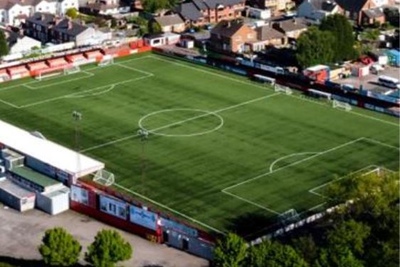
From Tamworth FC
Located in the Kettlebrook of Tamworth, a market town in Staffordshire, The Lamb Ground opened its doors for the first time in 1934. Boasting a 3G pitch and a capacity of 4,000, the venue is named after the Lamb Inn, which stood at the entrance of what later became the car park for the ground. As you can imagine, it has undergone numerous changes and developments since it first opened, although the basic nature of the stadium means that it isn’t so different that someone arriving from 1934 in a time machine wouldn’t be able to recognise it. Instead, it has been about modernisations and bringing it up to the necessary standard.
Tamworth Football Club was founded in 1933 after Tamworth Castle, the previous club that played in the town, ceased to be. The club initially played in the Birmingham Combination and the West Midlands (Regional) League, reaching the Southern League in 1972 before falling on hard times and dropping back down through the divisions. The club has enjoyed some relative success over the years, such as winning the FA Vase in 1989, but has spent most of its existence in the lower leagues of the English football pyramid. Since 2009, Tamworth have played in an all red kit with white sides, although that has differed at numerous times.
Stats
| The Lamb Ground Stats | |
|---|---|
| Year Opened | 1934 |
| Capacity | 4000 |
| Average Attendance | 1238 |
| Record Attendance | 4920 (Tamworth v Atherstone Town (1948)) |
| Pitch Size | 101 x 64 (6464) |
| Owner | Tamworth Football Club |
| Clubs Hosted | Tamworth |
| Tamworth FC Stats | |
|---|---|
| Year Founded | 1933 |
| Nickname | The Lambs |
| Rivals | Burton Albion, Nuneaton Borough, Atherstone Town, Bedworth United, Bolehall Swifts |
| Previous Stadiums | The Jolly Sailor Ground |
| Kit | Red with White (Home) / Blue & Black (Away) |
| Shirt Sponsor | Bradley Scott Windows / Turpins |
| Team Owner | Bob Andrews |
| Record Goalscorer | John Bayliss (173) |
The Lamb Ground Photos
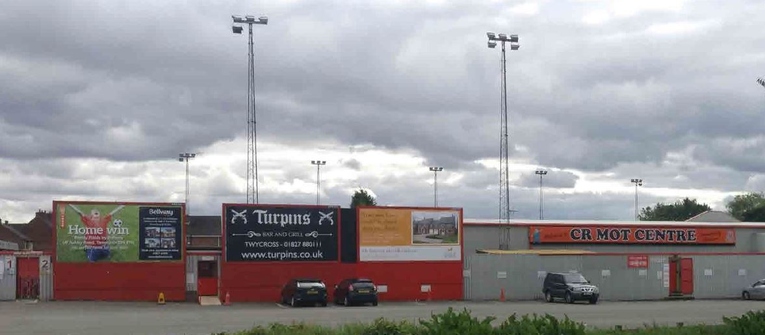
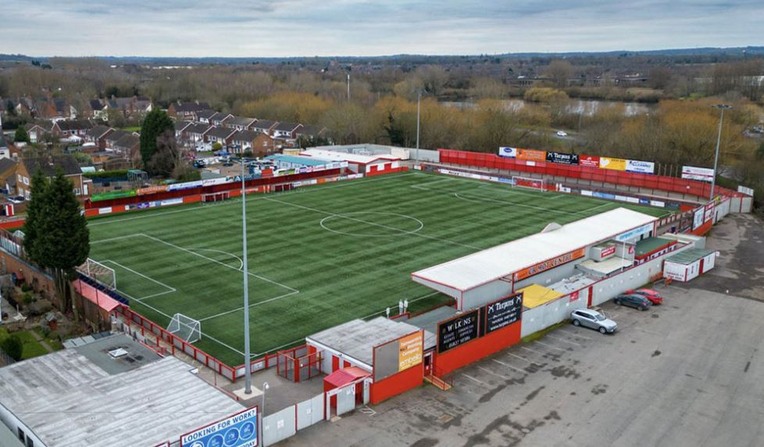
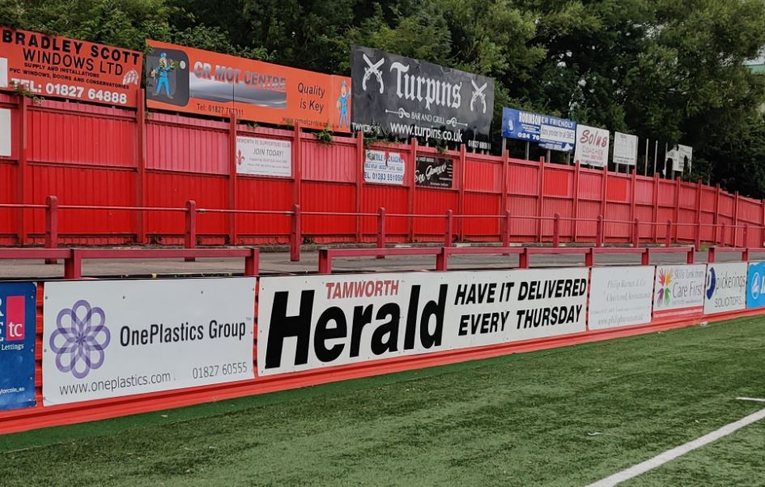
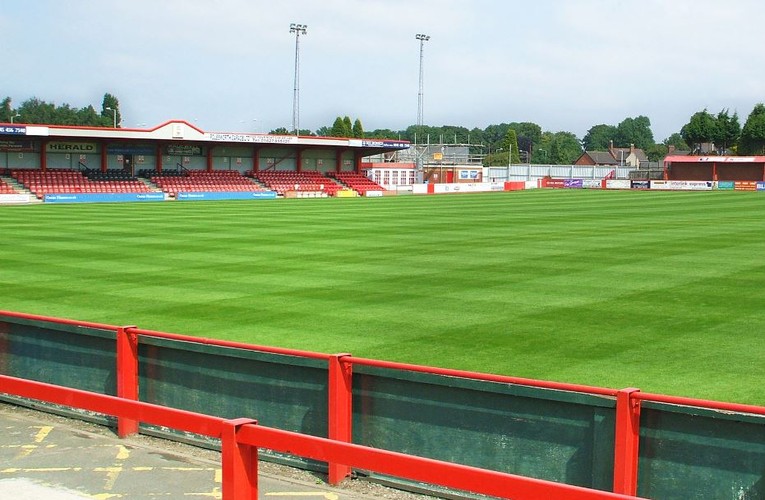
The Lamb Ground Seating Plan and Where to Sit
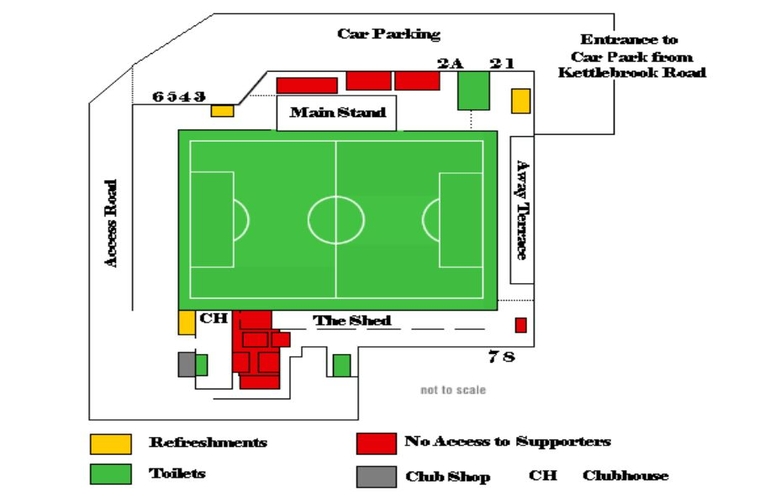
If you’re looking to go and watch a match at the Lamb Ground then you’ll almost certainly be in a terraced section unless you’re in the Main Stand. That promises a covered section for a little over 500 people. That is on the northern side of the ground and is the only stand in the stadium that has ever been officially named. Opposite it is a covered terrace known colloquially as The Shed, which is where the most vocal fans watch matches from and where the players’ tunnel is located. Opposition supporters are located in a terrace behind one of the goals, whilst an open terrace is found opposite it.
Tamworth FC Ticket Prices
How much you’ll pay for a ticket to a Tamworth match will depend entirely on where you want to be, how old you are and whether you buy your ticket online or at the ticket office. Here is a look at the prices:
| – | TERRACE | TERRACE | MAIN STAND SEATS | MAIN STAND SEATS |
|---|---|---|---|---|
| Online (+ £0.95) | Ticket Office | Online (+ £0.95) | Ticket Office | |
| Adult | £15 | £16 | £17 | £18 |
| Concession (65+) | £11 | £12 | £13 | £14 |
| 16 / 17 | £6 | £7 | £8 | £9 |
| Junior Lamb (7-15) | £4 | £5 | £6 | £7 |
| Mini Lamb (U6) | Free | Free | £2 | £3 |
One thing to bear in mind is that online transactions result in a transaction fee of 95p being applied, so you’ll end up paying pretty much the same amount as if you buy from the ticket office.
How To Get Tamworth FC Tickets
As with most non-league clubs, Tamworth rarely sell enough tickets to mean that you can’t just buy one at the ticket office on the day of a game, although cash is not accepted. That is not true of those under 17, however, who must buy their tickets online ahead of the game. Everyone can buy tickets online if they wish to, but its the younger people that must if they want to go to a match.
Where to Buy
Getting To The Lamb Ground
Train – Tamworth Railway Station is served by two main lines, with trains coming in from London, the North West, Newcastle and Penzance. If you’re getting the train to watch a match then that is where you’ll end up.
Bus – For those looking to get a bus to the stadium, numbers 5, 785, 786 and the SFA2 all stop reasonably close.
Car – Anyone driving to a Tamworth match will want to get onto the A5 dual carriageway, which starts at Junction 10 of the M42. You can also look to the A38 / M6 Toll roundabout. Initially look out for signs to the Snowdome, then from there keep your eye out for signs to the ground itself.
By Air – If you’re considering flying into the country in order to watch a Tamworth match, you’ll almost certainly be heading to Birmingham International, given the fact that it is about 13 miles away. You could fly to East Midlands, which is around 20 miles or, if you’re particularly sadistic, aim for Manchester Airport, which is around 60 miles away.
Taxi – Those looking to get a taxi from the train station to the football ground will pay in the region of £5 to £10 depending on traffic.
Parking Near The Lamb Ground
There is a decent-sized car park at the ground itself, which you’ll pay for, or you can look to park on the street. If you’re going to do the latter then make sure that you obey all of the rules of the road.
Useful Resources
- Parking - Just Park
Pubs and Bars Near The Lamb Ground
Korey's Bar & Grill
Tamworth Sports Bar
The Penny Black
About Tamworth FC
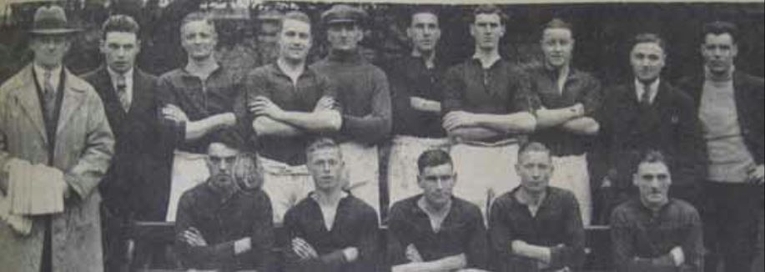
The market town of Tamworth was served by a football club known as Tamworth Castle FC. In 1933, however, the club folded, so a businessman wrote a letter in the local newspaper starting a campaign for a new club to be formed. This set in motion the necessary things for Tamworth Football Club to be formed, competing in the Birmingham Combination and then the Birmingham and District League. The 1960s proved to be a successful period for the club, winning the league twice and finishing as the runners-up on another two occasions. At the same time, Tamworth also won numerous cups in the decade.
It is not outrageous to suggest that Tamworth’s success has been relative. Whilst the likes of Liverpool or Manchester United wouldn’t bat an eyelid at the possibility of winning the FA Vase, it was a big deal when Tamworth won it in 1989. That is a sign of where the club is in the grand scheme of things, spending most of its existence in the lower leagues and enjoying its fair share of promotion and relegation. The won the Conference North in 2009, for example, which was added to success in the likes of the Southern Football League Division One Midlands and the West Midlands (Regional) League that it had won in the past.
The Lamb Ground History
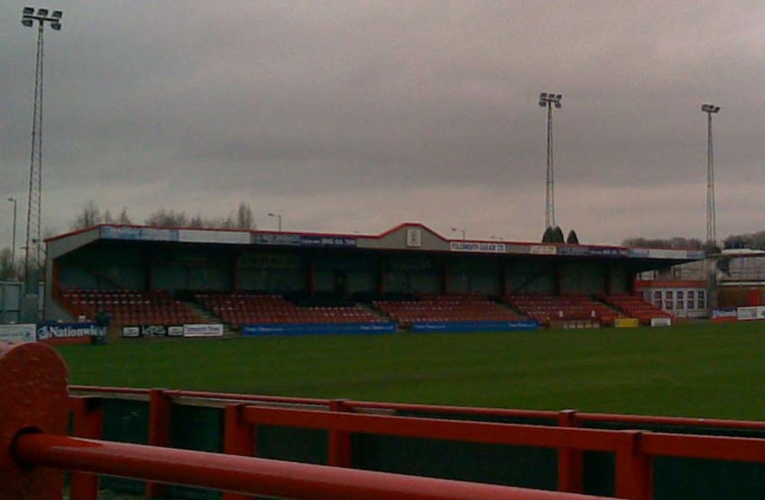
When the club was first formed, it played its games on ground next to the Jolly Sailor pub. In 1934 it moved to its current stadium, which was known as the Lamb Ground on account of the fact that it was located close to the Lamb Inn. It was originally a pig farm in the 19th century and Kettlebrook Oakfield Football Club used it to play its matches before Tamworth was formed. The facilities at the ground have been improved over the years in order to include the likes of changing rooms, a sponsor’s lounge and covered terraces. The floodlights at the ground were acquired from Scarborough FC in 1969.
The fact that nine of the ten original pylons that the floodlights were attached to are still standing probably tells you quite a lot about the start of the Lamb Ground, all things considered. The Main Stand was built in 1996 and offers covered seating to a little over 500 supporters. It was built with the future in mind, with plans in place to de-construct it and move it should the Lambs ever move to a new stadium. The clubhouse is only open on match days or for specific social or business events, with the current bar area being the location of the old changing rooms. It is open to opposition supporters, provided segregation isn’t in place.
